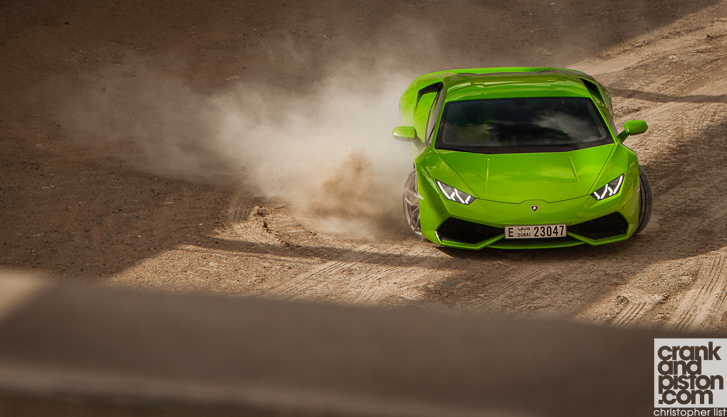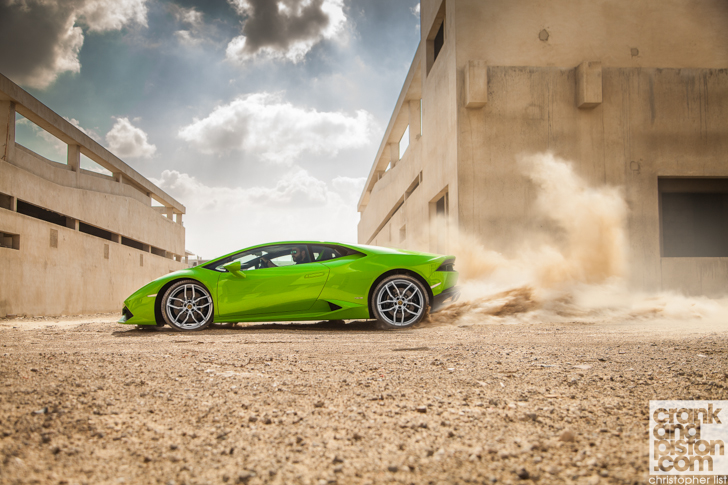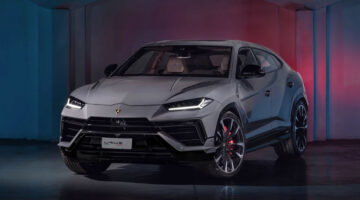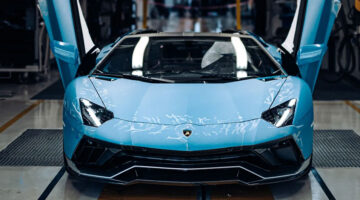Lamborghini’s replacement to the Gallardo has a serious reputation to uphold. crankandpiston.com finds out whether the new Huracán is up to the task
[Not a valid template]As a professional road-tester it’s my job to be measured in my approach to any new car, but on this occasion my inner twelve year old has firmly taken over. There is a marked spring in my step and I can hardly hide my giddy excitement as the long wait to drive the Huracán LP610-4 has finally come to an end. It’s not every day that an all-new Lamborghini comes along, and in this case we’ve had to wait eleven long years for the excellent but long in the tooth Gallardo to be replaced.
When you consider that the Gallardo accounts for more than half of the cars produced during Lamborghini’s entire half a century of existence, you begin to understand the importance of the new car to Sant’ Agatha’s fortunes. And if visuals are anything to go by, the Huracán is already a winner. The overall look is softer than its predecessor, but that’s not difficult considering the so sharp they would cut you lines of the Gallardo. The combination of tight curves and rakish angles is elegant yet full of purpose. There are hints of Lancia Stratos in its stance, particularly at the rear. While not as outlandish as some of the bewinged special edition Gallardo’s that were rolled out towards the end of its tenure, to my eyes the Huracán is arguably the prettiest Lamborghini since the bewitching Muira.
Underneath the gorgeous skin the changes are pretty comprehensive. The Huracán features an all-new chassis structure that will be shared with the next Audi R8. As you’d expect there’s plenty of carbonfibre at play, with the rear bulkhead, central tunnel and the rear part of the sills all made of carbon weave. From the rear bulkhead backwards and from the base of the windscreen forwards the frame is aluminium as are all the body panels. According to Lambo the chassis is 10 per cent lighter than that of the Gallardo, but 50 per cent more rigid.
Pop open the conventional doors and you are greeted by a pretty unconventional interior. There is a similar vibe to the Aventador inside, mainly because of the digital TFT screen that replaces the conventional dials, and while their graphics are a tad tacky they certainly inject a bit of drama. The other carry-over from big brother is the starter button that sits under a red fighter-plane-style metal flap, childish for sure yet oh so cool. Unique to the Huracán are two air conditioning vents that stick out the top of the dash, that look like they were stuck on as a bit of an after-thought, while they look a bit cheap oddly they add to the supercar atmosphere. The final flourishes come from a small hexagonal display with gauges for Benzina, Acqua and Temperatura that sits above a row of toggle switches in the middle of the centre console. To its right is a hexagonal honeycomb that appears to have no other purpose than to add to the visual theatre. So far, so Lamborghini.
I duck down and into the bucket seats and my backside is greeted with a distinct and uncomfortable lack of padding. The flat-bottomed steering wheel in front of me is littered with buttons a la Ferrari, but the layout is more fidgety and far less intuitive, with the indicator toggle particularly irksome. The most significant button though is the bright red ANIMA switch (that’s Adaptive Network Intelligent Management, and not coincidentally the Italian word for soul) which is used to select Strada, Sport and Corsa modes, but more on that in a bit.
Flick up the aforementioned red guard, press the black starter button and the 5.2-litre 602bhp V10 explodes into life with a flamboyant flare of revs, before settling into a busy idle full of mechanical intent. The engine is an evolution of the much loved unit in the Gallardo, and it’s refreshing to see Lamborghini resolutely stick to its naturally aspirated guns at a time when the whole automotive world is heading in the direction of forced induction. That doesn’t mean that there are no concessions to modern times though, as this is the first Lambo to be fitted with stop/start technology. Apparently our Huracán’s lurid paint isn’t the only thing about it that’s green.
[Not a valid template]Pull the massive parentheses-shaped paddles and the new seven-speed dual-clutch gearbox comes into play. This is a significant and much needed change, as it replaces the Gallardo’s clunking robotised manual. So what is the Huracán like to drive? Well initial impressions are a bit underwhelming. Don’t misunderstand this to mean that the Huracán isn’t a great car, for it definitely is. It is immediately obvious that there is an increase in finesse compared to the Gallardo, with the quality of the ride noticeably suppler, courtesy of double wishbones at each corner and the use of the clever magnetorheological dampers as seen in many fast Audi’s. And that there is the problem, in the softest Strada mode it feels more like an Audi R8 cranked up a couple of notches rather than a fire and brimstone Italian. As you’d expect it’s fast, really fast but the way it delivers its performance is more sophisticated than scintillating.
This new found sensibility is starting to worry my inner child, but then two clicks downwards of the ANIMA switch quickly dispels those concerns. I’m now in Corsa mode, and just like that the Huracán has transformed from German scientist to Italian axe murderer. You can feel the damping tense up, while the engine and gearshift become more urgent. In fact that’s a bit of an understatement, as the gearshift is now so vicious it borders on sadistic, the violence of a full bore upshift is literally breathtaking, not to mention painful. The V10 sitting behind me is keen to rev and while there’s plenty of poke in the lower and mid-range it’s at the top where it becomes truly special, screaming manically all the way to the redline. Back out of the throttle and your ears are barraged with a salvo of snap, crackle and pop that Rice Krispies would be proud of.
The end numeral of LP610-4 signifies that the Huracán is four wheel drive and as we’ve come to expect from Lamborghini this means insurmountable levels of traction, only the slickest of road surfaces will allow you a small wag of the tail, and on those rare occasions the Huracán is poised and predictable. On grippier tarmac the balance is resolutely towards understeer. Our test car is equipped with Dynamic steering, which hasn’t received the ravest of reviews in fast Audis, and it isn’t much different here. While the level of feel isn’t bad the rate of response relative to steering input isn’t quite right. This led to some heart-stopping moments on turn-in to fast corners, where for a split-second it feels like the front isn’t going to bite before the tires grip and pull you through. In contrast to the steering, the carbon brakes are a revelation, as past Lamborghini efforts have been sorely lacking. This time though they’ve gotten it just right, the savage rate of retardation matched with levels of sensitivity and feel that Gallardo owners can only dream of.
So does the Huracán meet expectations? It’s breadth of ability is unlike anything that has rolled out of Sant’ Agata’s gates before. It combines captivating looks, supercar theatre and sensational performance with real world usability and is an all-round excellent machine as a result. The problem is I can’t help but sense that there is a tad too much Audi underneath that gorgeous exterior and it suffers a bit for it. In some ways it feels like the twelve year old boy has turned into a man.
Technical specifications available on page 2
– FULL GALLERIES AVAILABLE HERE and HERE – CLICK –
*Our thanks to Christopher List






